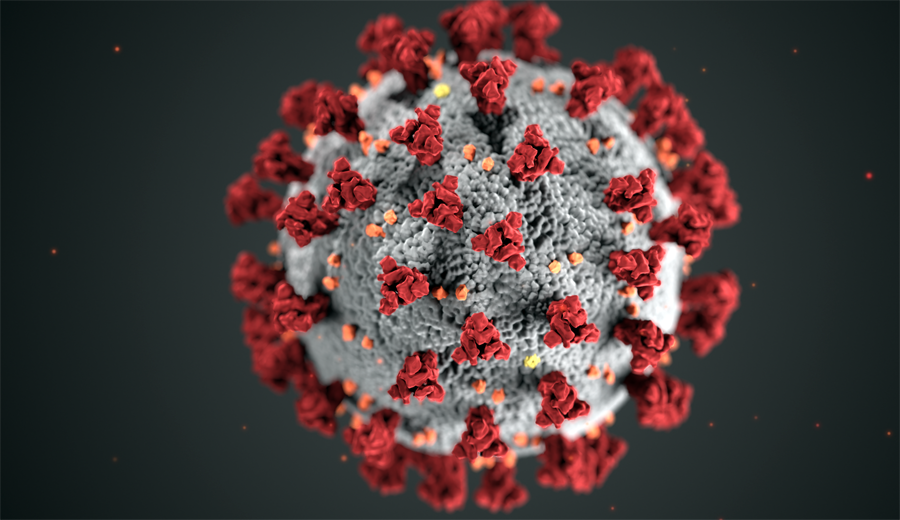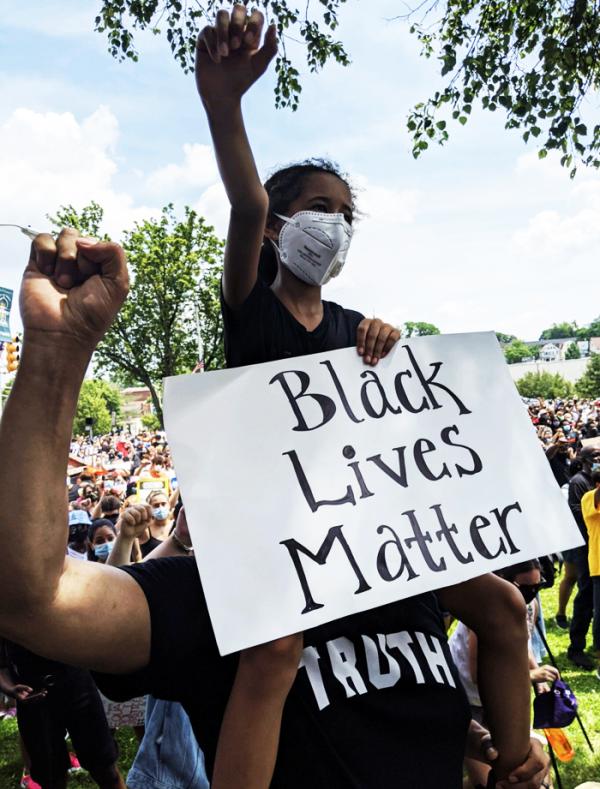KID REPORTERS’ NOTEBOOK
Understanding the Coronavirus


This image created by the CDC shows the spikes that adorn the outer surface of a coronavirus when it’s viewed microscopically.
As of June 18, nearly 130,000 people in the United States have died from COVID-19, the respiratory disease caused by the novel coronavirus. The highly-contagious virus was first detected in China in the fall of 2019.
More than 2.2 million people in the U.S. have been diagnosed with COVID-19. Across the globe, more than 8.5 million people have been infected, with the death toll nearing 500,000.
After months of statewide lockdowns, the outbreak is stabilizing in the U.S., which has one of the worst infection rates in the world.
Hundreds of people are still dying each day. The elderly, African Americans, and Latinos are at particular risk. New studies show that 42% of all COVID-19-related deaths in the U.S. have taken place in nursing homes and assisted living facilities, and Black Americans are dying at three times the rate of white people.

Since late May, hundreds of thousands people around the country have been participating in protests to end police brutality and systemic racism.
PROTESTS AGAINST RACISM
Since May 25, when a Minneapolis police officer killed George Floyd, a Black resident who had allegedly tried to make a purchase with a counterfeit bill, anger and frustration have erupted across the country and around the world. In the U.S. alone, hundreds of thousands of people have been participating in Black Lives Matter protests to raise awareness about police brutality and systemic racism.
Many experts agree that racial inequality is even more deadly than the coronavirus. It affects every aspect of life, including health care, housing, education, and job opportunities, leading to widespread harm in Black and brown communities. What is still unknown is the effect the protests may have on the further spread of COVID-19.

Josh asks CDC epidemiologists Eric Pevzner and Kelly Cordeira about the coronavirus.
A FAILURE OF LEADERSHIP
Scientists, medical experts, and political analysts all cite the lack of leadership by President Donald Trump for the catastrophic response to the coronavirus in the U.S. The president has said repeatedly that the virus will “fade away,” even without a vaccine.
“The Trump administration is trying to convince us not only that the pandemic is all but behind us, but also that its spectacularly incompetent response has been a great triumph,” columnist Paul Waldman wrote in The Washington Post. “This will without a doubt go down as one of the worst presidential failures in American history.”
Businesses in the U.S. are now reopening, and people are resuming such activities as eating in restaurants, shopping for nonessential items, and socializing in large groups. Despite strong evidence that wearing masks helps slow the spread of the virus, many Americans, including President Trump and Vice President Mike Pence, refuse to wear them. Pence heads the administration’s coronavirus task force.

Eric Pevzner, an epidemiologist at the CDC, talks with Josh via Zoom.
“DISEASE DETECTIVES”
Scientists at the Centers for Disease Control and Prevention (CDC), the leading public health agency of the U.S. government, have been working to combat the virus and provide safety guidelines to prevent further spread. From the start, their efforts have been hampered by faulty testing, a lack of funding, and missteps by President Trump.
To date, the CDC has assigned 130 “disease detectives” to respond to the pandemic and help state and local governments implement treatments and safety measures. To better understand their work, I recently spoke with two CDC epidemiologists [individuals who study the causes and patterns of infectious diseases] via Zoom.
Eric Pevzner is chief of the Epidemiology Workforce Branch (EWB) and Epidemic Intelligence Service. Kelly Cordeira is a member of the EWB and the lead epidemiologist in the CDC’s Student Programs & Partnerships. Here are highlights from our conversation, which has been edited for brevity and clarity.
Will it be possible for schools to reopen in the fall?
CORDEIRA: This decision needs to be made independently by the states. Each governor has to take into consideration what’s happening in their individual state, and then each school has to make the decision based on the numbers and what is happening in their individual counties.
In the fall, things may not be the same as they are now, so schools will have to make sure then whether all of their students and staff can be safe and healthy to the best of their abilities.
Findings suggest that the virus, like AIDS, will be here for a while. What is being done to limit its spread?
PEVZNER: With any new pathogen [virus], such as AIDS or the coronavirus, there are steps taken to ensure ideal public health. To begin with, we need to know how many people are getting sick, how long they are getting sick, and where the greatest areas of transmission are happening. That’s something we’re working on closely with state and local health departments.
The next step is to ensure widespread testing. There is a major effort to make testing available everywhere and ensure that anybody who needs a test can get it. For anyone who tests positive, we need to do contact tracing, which means finding anybody who might’ve shared time and space with someone who has been diagnosed, and then notify them so they can receive testing and slow down transmission by self-isolating. We are beginning to implement contact tracing in several states, but the process is painstaking, and we have a long way to go.
It’s important that anyone who may have been infected to separate themselves from anybody else for at least 14 days, so that no one can get sick from them. During that time, we see whether they develop symptoms. Meanwhile, we’re working on developing a vaccine and improving treatments. That’s our plan for any new virus.
What is the status of vaccine development?
PEVZNER: Drugs and vaccines are being tested to determine their effectiveness, as well as safety. Around the world, more than a dozen vaccine trials are underway. But we don’t want to make any new vaccine or drug available to people until we’re confident that it can be both effective and safe.
Researchers may have a vaccine ready sometime in 2021. That doesn’t guarantee life will return to normal immediately, but treatments and our ability to isolate infected people are improving. Social distancing whenever possible is still important.
What can kids do about the situation we’re facing?
PEVZNER: I’ve been so impressed by my kids and other kids who want to stop the pandemic as quickly as possible. They just cannot understand why anybody wouldn’t do everything possible to stop the spread of COVID-19. I see kids reminding adults to stay six feet apart. I see kids really good about asking, ‘Why aren’t they wearing a mask?’ I also see kids coming up with new games to play over Zoom or while keeping a safe distance from one another outside. Already, kids are coming up with innovative ways to help us stop the spread of the virus and make the best of things during a really hard time.
CORDEIRA: Knowledge is powerful right now. It’s important for kids to do their best to understand what’s going on and take what they’re hearing in the news and from their friends and family, and try to digest that information and think critically about it. The more young people understand and ground their ideas in science, the more helpful they can be in thinking through their creative ideas and projects to move forward with our new normal.
